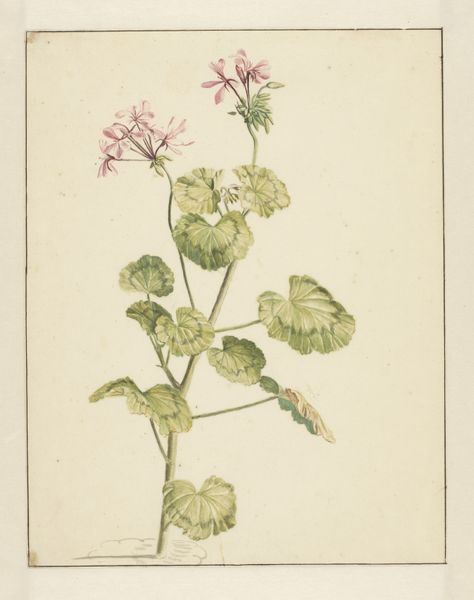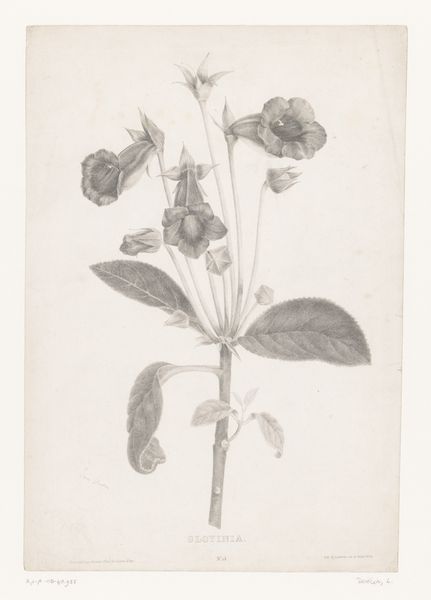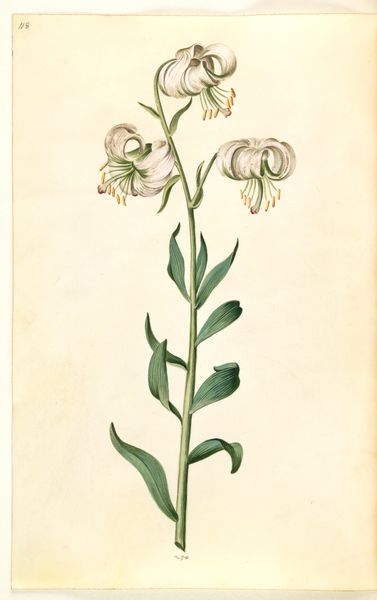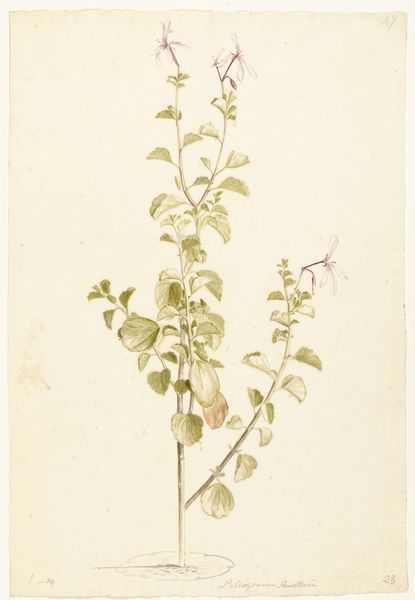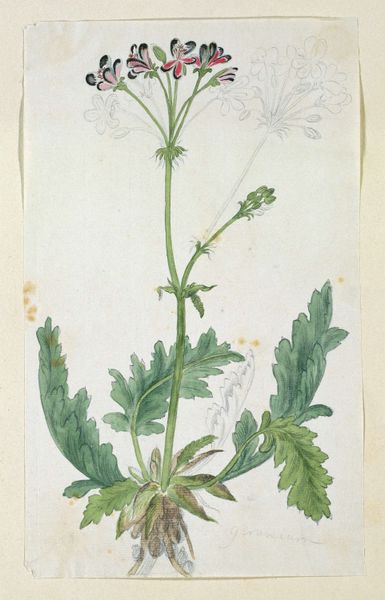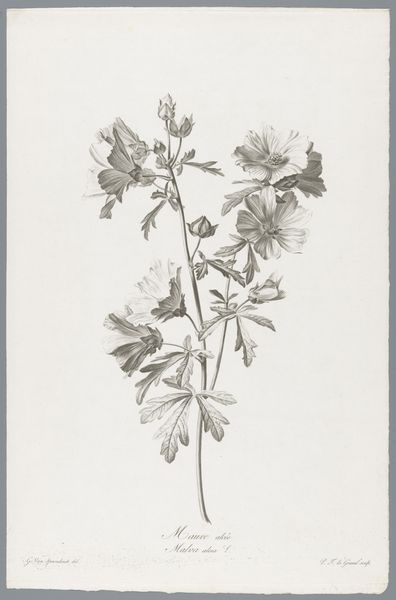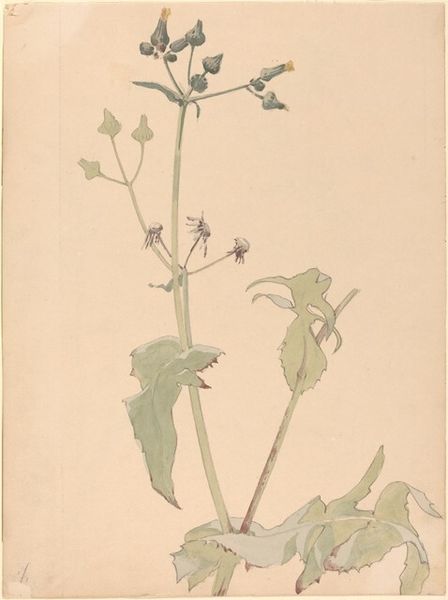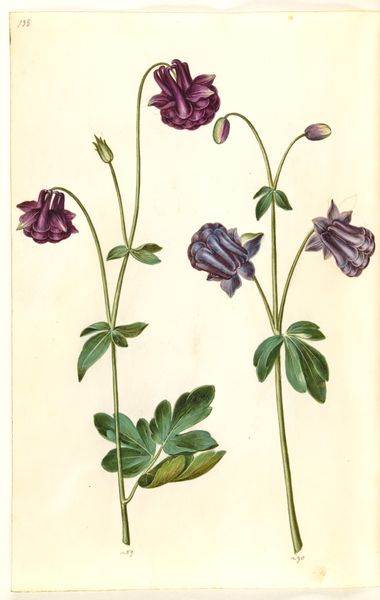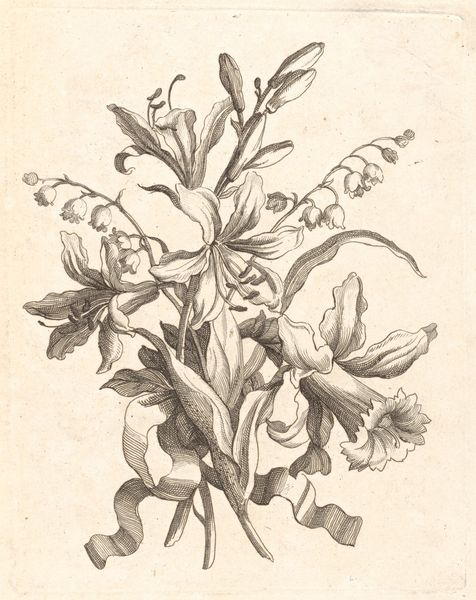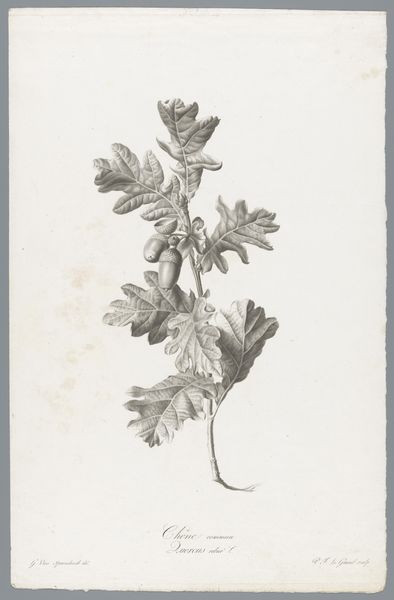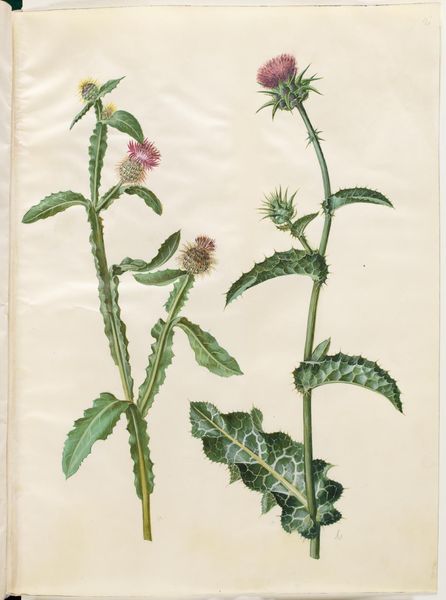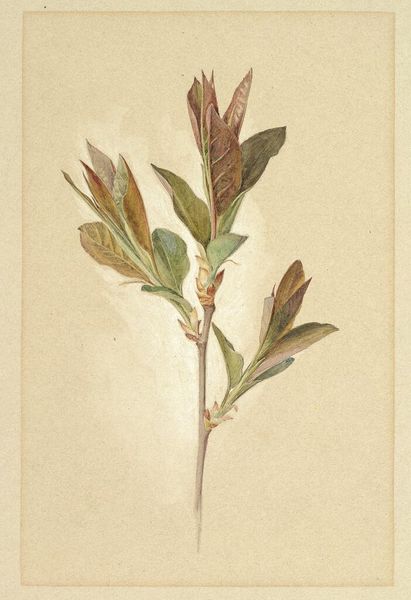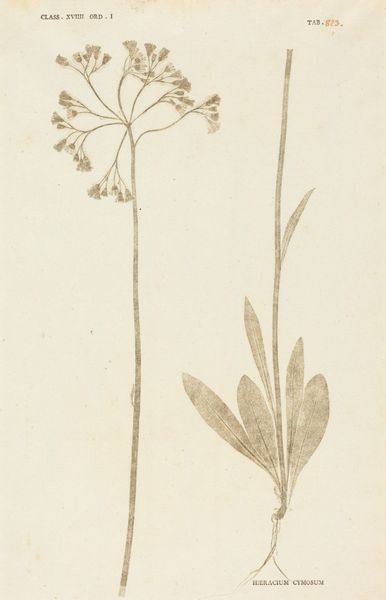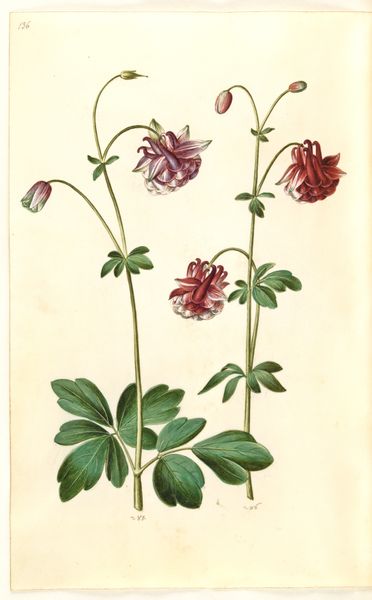
drawing, watercolor
#
drawing
#
botanical illustration
#
watercolor
#
botanical drawing
#
watercolour illustration
#
genre-painting
#
botanical art
Dimensions: height 379 mm, width 238 mm
Copyright: Rijks Museum: Open Domain
Curator: This is “Gevlekte aronskelk,” or “Spotted Arum Lily,” a watercolor drawing created by Laurens Vincentsz. van der Vinne, sometime between 1668 and 1729. Editor: It's interesting, immediately I'm struck by this sense of quiet decay – the spotted, almost diseased look to the leaves. It’s quite different from the idealized floral depictions we often see. Curator: Exactly! Considering the social context of the Dutch Golden Age, where wealth was flaunted through elaborate still lifes of perfect blooms, this rendering of an imperfect plant invites deeper consideration. What sort of audience was this for, and what might they find interesting about such a representation? Editor: I wonder about that as well. Perhaps the patron saw a metaphor for mortality, a memento mori disguised within a botanical study? Or perhaps there’s a commentary on the unsustainable desire for “perfection,” and the realities of natural processes – disease, decay. We need to be thinking more broadly about access to materials and Van der Vinne’s studio practice at the time. Who was making the pigment? How accessible would this image be beyond elite networks of commerce? Curator: That’s a sharp reading. Van der Vinne came from a family of painters. It makes me consider the labour that goes into this level of close observation, and then careful mixing of colors in order to achieve this likeness. Look how each individual spot has been meticulously rendered, that sort of close looking has the power to connect us to land use today. Editor: Right! How the exploitation of certain populations’ labour helped lead to access to global materials used in artworks like this drawing! But to return to this focus on disease, it asks me to interrogate, who gets represented in art history, what sorts of bodies were allowed or not allowed space in these forms of representations. Curator: Definitely food for thought as we consider our relationships with the world and the stories art tells us about it. Editor: Absolutely. The closer we examine even the most seemingly straightforward image, the more complex and fascinating the underlying narratives become.
Comments
No comments
Be the first to comment and join the conversation on the ultimate creative platform.
